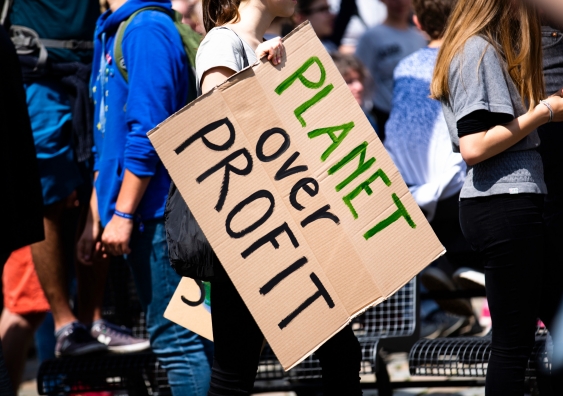From higher mortgages to hoarding outdated technologies, how will the government’s current stance on climate change affect the economy for Australians?

How will the government’s current stance on climate change affect the economy for Australians? Photo: Pexels / Markus Spiske
With the COP26 summit fast approaching, the pressure is on for Australia and other nations to commit to reaching a target of net zero emissions by 2050. This effort is in a bid to keep global warming to 1.5°C and prevent disastrous impacts for humanity.
One of the major tenets of this acceleration? A phase-out of coal – .
There is mounting , from and even , for Australia’s Prime Minister Scott Morrison (who as ), to attend the Glasgow summit and commit to targets. But with key figures in the Australian government still resisting , which they see as coming into conflict with Australia’s reliance on coal, this urgent call seems to be going unanswered.
Add to this that Australia is not on track to achieve the modest Paris Agreement targets it has already agreed to, and worries are spiking on the country’s inaction on climate change. But what would this inaction cost Australia environmentally and economically?
According to , Professor of Economics at the , there are major implications. For example, while Australia might choose to stick with coal as its energy source of choice, global moves away from using unsustainable technologies will leave Australia with financially stranded assets.
“As the world transitions away from coal, any country with coal mining infrastructure is going to need to transition away from those, and Australia is an important country in that respect,” he says.
“It’s important to understand that this is a technological force that is happening. It might happen sooner, it might happen later, but it is going to happen, and Australia needs to prepare for that.”
See also:
Creative destruction occurs as old technologies die, and new ones emerge
Prof. Holden points out that moving away from old technology and embracing the new is in no way unusual in economic history. In fact, there have been ‘stranded assets’ scattered throughout history as economies transition with the coming of new ideas.
“The Austrian economist Schumpeter famously called this process, creative destruction,” he says. “There is a destructive aspect to it, but there’s also a creative aspect. And that’s what we should be trying to embrace.”
While arguments from those in the Australian government against a net zero commitment include that , Prof. Holden says that putting place-based policies in place could protect communities during the change.
“The best thing that we can do is make sure that we make that transition as smoothly as possible,” he says. “That involves putting in policies for regional towns and communities that are affected by the transition away from coal and helping workers into new jobs and industries.”
For workers in the coal industry in regional areas such as Central Queensland and the Hunter Valley, this could be a way to ensure the communities flourish with a new lease of life, instead of propping up a dying industry, he adds.
“Many countries have already had to face this,” Prof. Holden says. “For example, with industries like car manufacturing, here in Australia.”
See also:
Hedging against sustainability ‘a bad economic bet’
Another major commitment to be discussed at COP26 is that of climate finance: financing that supports actions that mitigate and adapt to climate change. In an Australian context, the country has and continues to fund the fossil fuel industry.
But with financiers around the world recognising that action on climate change is inevitable (and that markets will shift to accommodate this) Prof. Holden says that backing companies who do not recognise this is a “bad economic bet”. It’s a point of view shared by many, from the to . “Finance is global,” says Prof. Holden. “The reality is that if we want to have access to global capital markets – and as a capital thirsty country Australia benefits hugely from that – then we need to show what we can do in terms of our commitment to decarbonizing our economy.”
See also:
With climate action change, comes economic opportunity
As well as the new technologies that would emerge in the shift to a green economy, there are further opportunities for economic growth when it comes to implementing an Emissions Trading Scheme, which is to be discussed at COP26.
A market-based solution such as an international trading scheme – something that has long been a politically contentious issue in Australia – would provide economic opportunity, says Prof. Holden.
“Economists have said since the early 1900s, that when you have a negative externality the way to deal with it is to internalise that through the price mechanism,” he says.
“To have a market-based solution that provides opportunities for green technology producers and adopters in Australia provides markets for our ingenuity, our ideas, and our renewable energy. We’re already seeing as a way of exporting green energy.”
See also:
Forget the cost of climate change action – consider the cost of inaction
In terms of the costs of adapting to and mitigating climate change, Prof. Holden says that this will depend on the exact technologies needed and how they evolve. But he warns that while it might be costly, not endeavouring to do so would cost even more.
“The cost of not adapting is going to be orders of magnitude larger than the cost of doing that,” he says. “And we’re fortunate to have great technological capability in terms of these adaptations.”
“We’ve already seen droughts in Australia, and the bushfires just before COVID hit. Extreme weather events are increasingly frequent, and Australia is not immune. So, we’ll have to do more, and we should do more of that as a way of dealing with climate change.”
See also:
See also:







